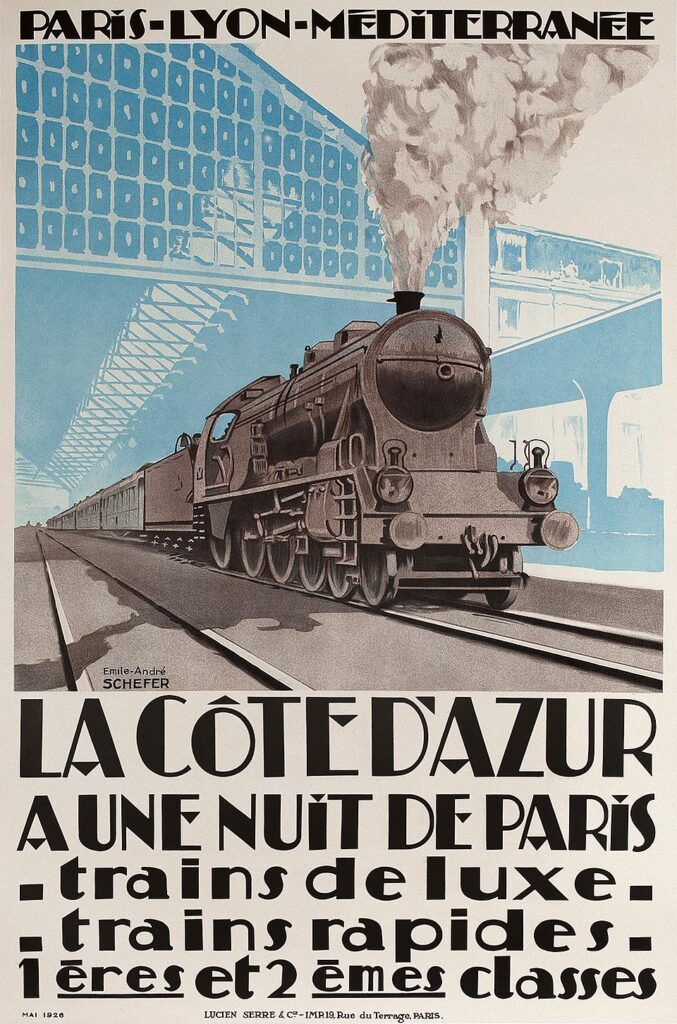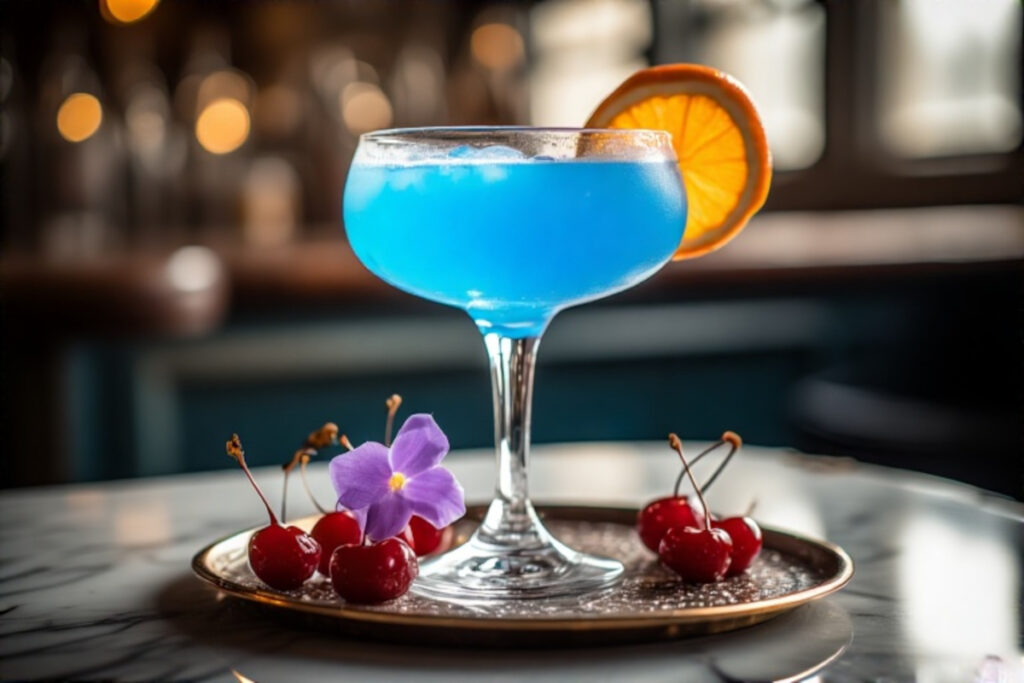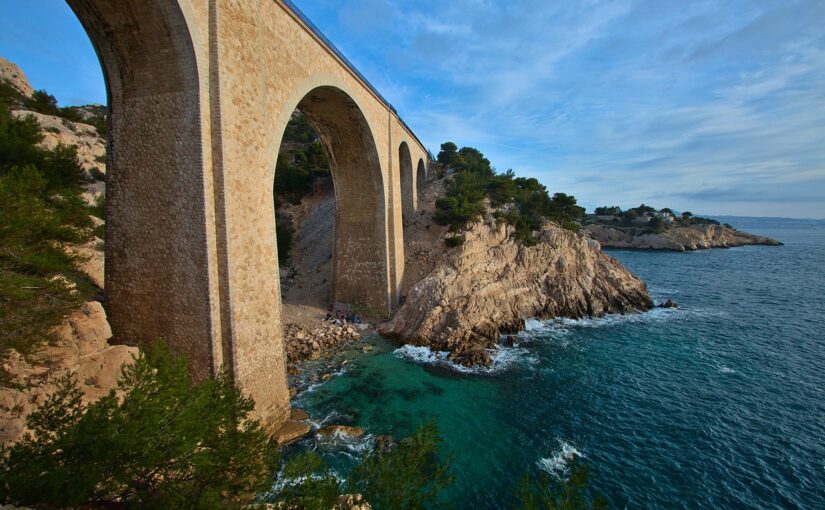There is a place in the south of France where the Mediterranean meets dramatic cliffs, sunlit beaches lie undisturbed, and azure waters shimmer beneath painted wooden boats. Here, along one of Europe’s most impressively scenic lines, runs the Train de la Côte Bleue. Not just a means of transportation, it is a moving balcony offering extraordinary views and a living testament to the historical elegance of French railway travel. To fully appreciate this railway gem, it helps to understand its delicate dance with the legendary Train Bleu, the luxury express that once defined continental glamour, adventure, and artistry.
A Ride Along the Deep Blue
The Train de la Côte Bleue weaves its journey, sixty kilometers of sun-kissed panorama, between Marseille and Miramas, hugging the coastline westward along the Mediterranean. This is not the crowded Côte d’Azur of Nice and Cannes, but the gentler, less frenetic Côte Bleue, painted by masters such as Auguste Renoir, Paul Cézanne, Raoul Dufy, and August Macke. Here, umbrella pines provide shade, secluded beaches lie between jagged rocks, and fishermen cast their nets from vibrantly colored pointus.
The charm of the Côte Bleue is that, even today, it feels suspended in time, as if the whirl and clamor of modernity have yet to intrude. There is a serenity here that has always called to the artistic soul, a region where the kaleidoscope of Provençal colors and scents still inspires.
To ride the Train de la Côte Bleue is to be immersed in this landscape. The trip is brief in distance but grand in spectacle. The track carves along limestone cliffs, crosses soaring viaducts, and slips through tunnels, offering a constantly changing show of turquoise sea, hidden coves, golden beaches, and rugged hillsides splashed with wildflowers. Coastal villages unfold at the foot of dramatic headlands, and everywhere the Mediterranean sparkles, its deep blue hues lending the line its evocative name.
Departure from Marseille Saint-Charles
The adventure begins at Marseille’s Saint-Charles Station, perched high above the city with an impressive staircase descent that reveals the metropolis in all its bustling glory: stone lions standing guard, exotic princesses in carved stone, and 104 stately steps sweeping travelers toward Marseille’s historic heart. Whether you are a weekend visitor, a local commuter, or a sea-loving Marseillais, this journey feels festive from the start.
Fourteen daily trains trace the route from Marseille to Miramas, winding through 23 tunnels, over two major bridges, and 18 viaducts. But the journey is taken at a leisurely pace; this is transport as a gentle immersion, not a rushed procession.
From Niolon to Istres: Stations on the Edge of the Sea
Among the stops on the Train de la Côte Bleue, each has its own personality and story.
Just minutes from Marseille, the train glides into Niolon. Here, a simple platform sits perched above a tiny, horseshoe-shaped harbor, nesting beneath a sweeping viaduct. High cliffs offer panoramas over the Bay of Marseille and the Calanques National Park’s first spurs. Niolon is beloved not only by painters but also divers, it shelters France’s largest diving training center alongside the customs officers’ path leading to the pristine Calanque de Méjean. In the off-season, the beaches are all but deserted, perfect for quiet contemplation or a brisk swim in clear waters.
The journey continues to Carry-le-Rouet, the Côte Bleue’s liveliest seaside resort. The town bustles with its open-air cafés, lively harbor, and classic French joie de vivre. The beaches here, such as Plage du Cap Rousset and Plage Fernandel, invite sunning and swimming. In winter, crowds come for the legendary Oursinades, festivals where fresh sea urchins and other treasures are caught and devoured by the beach, usually paired with a crisp glass of white wine.
Next is Sausset-les-Pins, a smaller, more intimate seaside town once at the heart of the local tuna fishing industry. Stroll along its Corniche promenade, watching sandy stretches and small coves alternate with rocky outcrops. The January Oursinade brings warmly bundled locals and visitors together in celebration, but on any day, Sausset-les-Pins exudes the charm of authentic Provence.
Beyond Martigues and Fos-sur-Mer, the train runs right alongside pink-hued saltwater lagoons near Istres, appearing, for a moment, to skim the water’s very surface. Istres itself invites visitors with its winding lanes, Provençal charm, and for younger visitors or dinosaur enthusiasts, the whimsical Dinosaur’Istres trail, where life-size prehistoric creatures gaze over the landscape.
A Living Painting and Accessible Escape
Unlike many routes that have yielded to concrete and modern speed, the Train de la Côte Bleue still traverses wild, unspoiled territory. Look out for fishermen in traditional boats heading out with the sunrise, or find inspiration in the same vistas that fascinated Macke and Dufy. The accessible SNCF trains make day trips simple, tickets and schedules are available at stations or online, ensuring a seamless transition from urban energy to tranquil coastal beauty.

The Grandeur of the Train Bleu
If the Train de la Côte Bleue delights with its understated Provençal authenticity, the legendary Train Bleu conjures up images of opulence and cosmopolitan adventure. Officially named the Calais-Méditerranée Express until 1947, this luxury train ran from Calais to the French-Italian Riviera from the late 19th century until 2007, with a wartime pause.
For decades, the Train Bleu was the ride of royalty, dignitaries, movie stars, and the fashion elite. Its iconic blue carriages, introduced in 1922 by the Compagnie Internationale des Wagons-Lits, became symbols of nighttime elegance. Passengers dined on fine cuisine, relaxed in plush sleeping cars, and awoke to magical sunrises along the Riviera. The name itself became shorthand for the romance of travel: the thrill of departure, mystery, and new horizons awaiting at every stop.
The Train Bleu was the muse of artists, writers, and musicians. Serge Diaghilev’s Ballets Russes staged a ballet named after it, with Jean Cocteau, Darius Milhaud, Coco Chanel, and Pablo Picasso behind the scenes. Agatha Christie sent Hercule Poirot south on its route to crack a murder mystery before she immortalized the Orient Express. French crime and literature flourished in the glamorous setting of the blue train, a background for intrigue, art, and society’s dramas.
The train’s historic restaurant at Paris’s Gare de Lyon, also called Le Train Bleu, remains to this day a glittering Belle Époque temple to the golden age of travel. Order a sparkling “Le Train Bleu” cocktail, made with cognac and pineapple juice, and you can almost hear echoes of long-lost journeys and whispered conversations in the night.
Legacy and Contrast: From Racing Cars to Coastal Rambles
While the Côte Bleue’s train touches on the humble and hidden, the Train Bleu’s history is woven with feats of daring and flashes of glamour. In the interwar years, aristocrats in Bentleys even tried to outpace the blue express from Cannes to Calais, turning travel into legend and marketing myth.
Yet these two lines, though so different in origin and atmosphere, share a devotion to the magical French landscape. Each draws the traveler not merely from one place to another, but into a state of mind: the Côte Bleue train with its measured pace and enveloping beauty, and the Train Bleu with a promise of far horizons and sophisticated escape.
Rediscovering the Blue
Today, the Calais-Méditerranée express is consigned to history and art, while the Train de la Côte Bleue continues to offer its unique embrace of the Mediterranean’s wilder, more intimate side. It encourages travelers to linger in sun-drenched coves, to savor the quiet rhythm of seaside villages, and to remember a time when the journey itself was the prize.
By traversing this line, you reclaim something rare, a window into memory, a painting brought to life, and a journey along the finest blue edge of France. Whether for an artist, a family, or a lone explorer, the Train de la Côte Bleue glides onward, always flirting with the deep blue sea, carrying with it whispers of legends and the unending promise of adventure.
Le Train Bleu Cocktail: Parisian Glam with a Vibrant Hue
Named for the legendary, luxurious train that carried travelers from Paris to the Riviera, the Le Train Bleu cocktail channels French elegance and early 20th-century romance in every sip. Famous for its striking blue color and subtle floral undertones, this stylish drink is guaranteed to steal the show at any soirée, brunch, or midnight rendezvous.

Why Try Le Train Bleu?
This cocktail combines alluring visuals with a gentle complexity, thanks to blue curaçao, gin, and a hint of floral liqueur or orange bitters. It’s a recipe that evokes azure Mediterranean waters, Art Deco rail lounges, and Parisian café culture all at once. The result? A vibrant, easy-to-assemble cocktail that looks stunning and tastes even better.
🍸 Le Train Bleu Cocktail Recipe
Servings: 1
Prep Time: 4 minutes
Difficulty: Easy
Ingredients
- 1.5 oz gin
- 0.5 oz blue curaçao
- 0.5 oz dry vermouth
- 0.25 oz maraschino liqueur (or use violet liqueur for a floral note)
- 1 dash orange bitters
- Ice
- Lemon twist or edible flower, for garnish
Preparation Steps
- Add gin, blue curaçao, dry vermouth, maraschino (or violet liqueur), and bitters to a mixing glass filled with ice.
- Stir (or shake) well until thoroughly chilled.
- Strain into a chilled coupe or martini glass.
- Garnish with a lemon twist, flower, or decorative blue sugar rim.
Pro Tip: For extra visual appeal, rim the glass with edible glitter or colored sugar before pouring.
✨ Flavor Notes & Customization
- Gin Base: Choose a classic London dry gin for clean botanicals, or a floral gin to echo the violet/maraschino notes.
- Liqueur Substitute: Try crème de violette for a subtle lavender note, or swap vermouth styles for more complexity.
- Bitters: Orange bitters brighten the blue, experiment with a dash of Peychaud’s for a whisper of spice.
For more details or variations, you can visit the official website of Le Train Bleu restaurant: www.le-train-bleu.com.
🚂 Raise a Glass to Grand Adventure
With its captivating appearance and rich backstory, the Le Train Bleu cocktail brings a touch of French Riviera glamour and travel nostalgia to any gathering. Elegant, bold, and visually unforgettable, it’s the perfect way to toast to new journeys and old-world luxury. No ticket required. Santé!
Teaser image: Côte Bleue (Blue Coast) (West of Marseille, France) – Jonquier viaduct on the Miramas – L’Estaque railway, Benjamin Smith.
If our work has inspired you, helped you grow, or simply brought a little warmth to your day, consider supporting Thalysia.com with a small donation. Your contribution helps us continue exploring ancient landscapes, documenting local traditions, and celebrating the art of living well.
